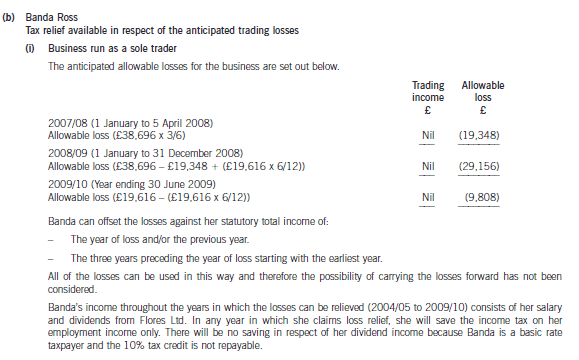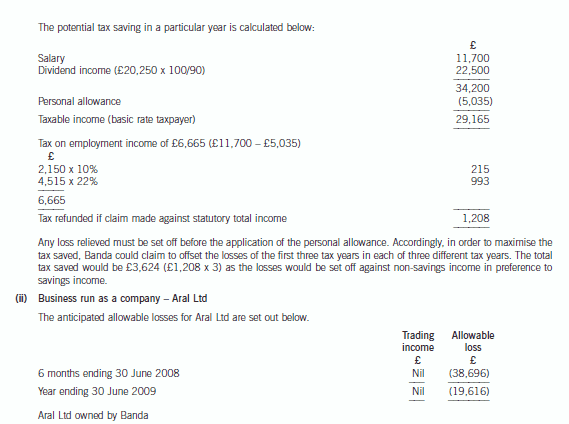速看:CMA与ACCA有什么区别,应该如何选择
发布时间:2020-03-14
CMA与ACCA的区别在哪?如何选择?为使广大考生及时了解,现将有关事项分享如下,一起来看看吧。
一、CMA和ACCA分别是什么?
CMA是美国注册管理会计师的英文缩写,被称为新一代财务管理者的国际财务认证。始终专注于管理会计人才的培养和发展,以“财务支持战略决策,战略融于财务管理”为理念,帮助财务全面掌握“财务+管理”知识体系。其中CMA考试的主要内容侧重预算预测、内部控制、决策支持、风险管理、成本分析等。根本目的在于培养财务管理人员的知识广度和深度,使其能预测商业的需求及参与策略决策制定,支持企业的战略决策分析,有效地实行成本控制,推动企业业绩提升。
ACCA在国内称为"国际注册会计师",实际上是特许公认会计师公会(The Association Of Chartered Certified Accountants)的缩写,它是英国具有特许头衔的4家注册会计师协会之一,也是当今较知名的国际性会计师组织之一。ACCA资格被认为是"国际财会界的通行证"。许多国家立法许可ACCA会员从事审计、投资顾问和破产执行工作。ACCA在欧洲会计专家协会(FEE)、亚太会计师联合会(CAPA)和加勒比特许会计师协会(ICAC)等会计组织中起着非常重要的作用。
二、CMA和ACCA比较:
CMA和ACCA分别属于管理会计和财务会计两个不同范畴的国际知名专业认证
ACCA培养人的主要方向还是财务会计和审计方向,虽然也涉及管理会计内容但不是其重点。ACCA的优势在于对财务会计所有领域全面覆盖,而且研究深入,对英国的财务会计准则也花费大量篇幅研究,完成ACCA的认证完全具备财务会计领域的中高级职位的知识结构要求。
CMA代表着会计发展的方向,不论你选择财务会计、审计、税务、成本、预算、资金或是其它会计模块,随着职业发展,都必将走入管理会计领域,并很可能因在管理会计领域卓有成效的工作,最终走向最高管理层。同时CMA课程设置比较集中:只有两门课程,考试时间设置灵活,只要自己学完有把握通过,随时可以约考,CMA全球学员的通过率在50%以上,平均通过时间在一年左右。
相信说了这么多,大家心中也会有自己的一个判断了,选择什么证书要看你希望去哪方面发展。切不可随意选择或者随大流。
以上就是今天分享的全部内容了,考生根据自己的情况自行收藏查阅,如需了解更多ACCA考试的相关内容,请关注51题库考试学习网!
下面小编为大家准备了 ACCA考试 的相关考题,供大家学习参考。
(b) Assess the benefits of the separation of the roles of chief executive and chairman that Alliya Yongvanich
argued for and explain her belief that ‘accountability to shareholders’ is increased by the separation of these
roles. (12 marks)
(b) Separation of the roles of CEO and chairman
Benefits of separation of roles
The separation of the roles of chief executive and chairman was first provided for in the UK by the 1992 Cadbury provisions
although it has been included in all codes since. Most relevant to the case is the terms of the ICGN clause s.11 and OECD
VI (E) both of which provide for the separation of these roles. In the UK it is covered in the combined code section A2.
The separation of roles offers the benefit that it frees up the chief executive to fully concentrate on the management of the
organisation without the necessity to report to shareholders or otherwise become distracted from his or her executive
responsibilities. The arrangement provides a position (that of chairman) that is expected to represent shareholders’ interests
and that is the point of contact into the company for shareholders. Some codes also require the chairman to represent the
interests of other stakeholders such as employees.
Having two people rather than one at the head of a large organisation removes the risks of ‘unfettered powers’ being
concentrated in a single individual and this is an important safeguard for investors concerned with excessive secrecy or
lack of transparency and accountability. The case of Robert Maxwell is a good illustration of a single dominating
executive chairman operating unchallenged and, in so doing, acting illegally. Having the two roles separated reduces
the risk of a conflict of interest in a single person being responsible for company performance whilst also reporting on
that performance to markets. Finally, the chairman provides a conduit for the concerns of non-executive directors who,
in turn, provide an important external representation of external concerns on boards of directors.
Tutorial note: Reference to codes other than the UK is also acceptable. In all cases, detailed (clause number) knowledge
of code provisions is not required.
Accountability and separation of roles
In terms of the separation of roles assisting in the accountability to shareholders, four points can be made.
The chairman scrutinises the chief executive’s management performance on behalf of the shareholders and will be
involved in approving the design of the chief executive’s reward package. It is the responsibility of the chairman to hold
the chief executive to account on shareholders’ behalfs.
Shareholders have an identified person (chairman) to hold accountable for the performance of their investment. Whilst
day-to-day contact will normally be with the investor relations department (or its equivalent) they can ultimately hold
the chairman to account.
The presence of a separate chairman ensures that a system is in place to ensure NEDs have a person to report to outside the
executive structure. This encourages the freedom of expression of NEDs to the chairman and this, in turn, enables issues to
be raised and acted upon when necessary.
The chairman is legally accountable and, in most cases, an experienced person. He/she can be independent and more
dispassionate because he or she is not intimately involved with day-to-day management issues.
(b) The tax relief available in respect of the anticipated trading losses, together with supporting calculations and
a recommended structure for the business. (16 marks)


Aral Ltd owned by Banda
The losses would have to be carried forward and deducted from the trading profits of the year ending 30 June 2010.
Aral Ltd cannot offset the loss in the current period or carry it back as it has no other income or gains.
Aral Ltd owned by Flores Ltd
The two companies will form. a group relief group if Flores Ltd owns at least 75% of the ordinary share capital of Aral
Ltd. The trading losses could be surrendered to Flores Ltd in the year ending 30 June 2008 and the year ending
30 June 2009. The total tax saved would be £11,079 ((£38,696 + £19,616) x 19%)
Recommended structure
The Aral business should be established in a company owned by Flores Ltd.
This will maximise the relief available in respect of the trading losses and enable relief to be obtained in the period in
which the losses are incurred.
Tutorial note
The whole of the loss for the period ending 30 June 2008 can be surrendered to Flores Ltd as it is less than that
company’s profit for the corresponding period, i.e. £60,000 (£120,000 x 6/12).
6 Discuss how developments in each of the following areas has affected the scope of the audit and the audit work
undertaken:
(a) fair value accounting; (6 marks)
6 DEVELOPMENTS
General comments
Tutorial note: The following comments, that could be made in respect of any of the three areas of development, will be given
credit only once.
■ Audit scope – the scope of a statutory audit should be as necessary to form. an audit opinion (i.e. unlimited).
■ Audit work undertaken – the nature, timing and extent of audit procedures should be as necessary to implement the overall
audit plan.
(a) Fair value accounting
■ Different definitions of fair value exist (among financial reporting frameworks or for different assets and liabilities within
a particular framework). For example, under IFRS it is ‘the amount for which an asset could be exchanged (or a liability
settled) between knowledgeable, willing parties in an arm’s length transaction’.
■ The term ‘fair value accounting’ is used to describe the measurement and disclosure of assets and/or liabilities at fair
value and the charging to profit and loss (or directly to equity) of any changes in fair value measurements.
■ Fair value accounting concerns measurements and disclosures but not initial recognition of assets and liabilities in
financial statements. It does not then, for example, affect the nature, timing and extent of audit procedures to confirm
the existence and completeness of rights and obligations.
■ Fair value may be determined with varying degrees of subjectivity. For example, there will be little (if any) subjectivity
for assets bought and sold in active and open markets that readily provide reliable information on the prices at which
exchange transactions occur. However, the valuation of assets with unique characteristics (or entity-specific assets) often
requires the projection and discounting of future cash flows.
■ The audit of estimates of fair values based on valuation models/techniques can be approached like other accounting
estimates (in accordance with ISA 540 ‘Audit of Accounting Estimates’). However, although the auditor should be able
to review and test the process used by management to develop the estimate, there may be:
? a much greater need for an independent estimate (and hence greater reliance on the work of experts in accordance
with ISA 620);
? no suitable subsequent events to confirm the estimate made (e.g. for assets that are held for use and not for
trading).
Tutorial note: Consider, for example, how the audit of ‘in-process research and development’ might compare with that
for an allowance for slow-moving inventory.
■ Different financial reporting frameworks require or permit a variety of fair value measures and disclosures in financial
statements. They also vary in the level of guidance provided (to preparers of the financial statements – and hence their
auditors). Under IFRS, certain fair values are based on management intent and ‘reasonable supportable assumptions’.
■ The audit of management intent potentially increases the auditor’s reliance on management representations. The auditor
must obtain such representations from the highest level of management and exercise an appropriate degree of
professional scepticism, being particularly alert to the implications of any conflicting evidence.
■ A significant development in international financial reporting is that it is no longer sufficient to report transactions and
past and future events that may only be possible. IAS 1 ‘Presentation of Financial Statements’ (Revised) requires that
key assumptions (and other key sources of estimation uncertainty) be disclosed. This requirement gives rise to yet
another area on which auditors may qualify their audit opinion, on grounds of disagreement, where such disclosure is
incorrect or inadequate.
■ Perhaps one of the most significant impacts of fair value accounting on audit work is that it necessarily increases it.
Consider for example, that even where the fair value of an asset is as easily vouched as original cost, fair value is
determined at least annually whereas historic cost is unchanged (and not re-vouched to original purchase
documentation).
(c) Briefly describe the principal audit work to be performed in respect of the carrying amount of the following
items in the balance sheet:
(i) development expenditure on the Fox model; (3 marks)
(c) Principal audit work
(i) Development expenditure on the Fox model
■ Agree opening balance, $6·3 million, to prior year working papers.
■ Physically inspect assembly plant/factory where the Fox is being developed and any vehicles so far manufactured
(e.g. for testing).
■ Substantiate costs incurred during the year, for example:
– goods (e.g. components) and services (e.g. consultants) to purchase invoices;
– labour (e.g. design engineers/technicians, mechanics, test drivers) to the payroll analysis;
– overheads (e.g. depreciation of development buildings and equipment, power, consumables) to
management’s calculation of overhead absorption and underlying cost accounts.
■ Review of internal trials/test drive results (e.g. in reports to management and video recordings of events).
■ Reperform. management’s impairment test of development expenditure. In particular recalculate value in use.
Tutorial note: It is highly unlikely that a reasonable estimate of fair value less costs to sell could be made for so
unique an asset.
■ Substantiate the key assumptions made by management in calculating value in use. For example:
– the level of sales expected when the car is launched to advance orders (this may have fallen with the delay
in the launch);
– the discount rate used to Pavia’s cost of capital;
– projected growth in sales to actual sales growth seen last time a new model was launched.
声明:本文内容由互联网用户自发贡献自行上传,本网站不拥有所有权,未作人工编辑处理,也不承担相关法律责任。如果您发现有涉嫌版权的内容,欢迎发送邮件至:contact@51tk.com 进行举报,并提供相关证据,工作人员会在5个工作日内联系你,一经查实,本站将立刻删除涉嫌侵权内容。
- 2020-03-08
- 2020-01-02
- 2020-05-06
- 2020-03-31
- 2020-01-10
- 2020-01-10
- 2020-01-09
- 2020-01-10
- 2020-03-01
- 2020-01-10
- 2020-01-10
- 2020-04-22
- 2020-01-10
- 2019-12-27
- 2020-01-10
- 2020-08-16
- 2020-05-20
- 2020-04-08
- 2020-01-10
- 2020-03-07
- 2020-01-10
- 2020-03-07
- 2020-05-17
- 2020-03-08
- 2020-04-07
- 2020-01-10
- 2020-01-10
- 2020-01-09
- 2020-01-10
- 2019-01-04